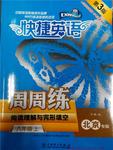题目内容
根据短文内容,判断正(T)误(F)。
Do you live in a city? Do you know how cities began? Long long ago, the world had only a few thousand people. These people moved from one place to another. They moved over the land, hunting animals for food.
No one knows how or when these people learned about growing food. But when they did, their life changed. They did not have to look for food any longer. They could stay in one place and grow it.
People began to live near one another, so the first village was established (建立). Many people came to live in the villages, and these villages became even larger.
When machines appeared, life in the villages changed again. People built factories. More and more people lived near the factories. The cities began.
Today, it’s strange that some people are moving back to small villages. Can you tell me why?
小题1:People moved from place to place to hunt animals.
小题2:The story says,“No one knows how or when these people learned about growing food. But when they did, their life changed.” In this sentence, the word “they” means people.
小题3:When machines appeared, life in the villages changed again.
小题4:All people like to live only in big cities.
小题5:People built factories after the cities grew big.
Do you live in a city? Do you know how cities began? Long long ago, the world had only a few thousand people. These people moved from one place to another. They moved over the land, hunting animals for food.
No one knows how or when these people learned about growing food. But when they did, their life changed. They did not have to look for food any longer. They could stay in one place and grow it.
People began to live near one another, so the first village was established (建立). Many people came to live in the villages, and these villages became even larger.
When machines appeared, life in the villages changed again. People built factories. More and more people lived near the factories. The cities began.
Today, it’s strange that some people are moving back to small villages. Can you tell me why?
小题1:People moved from place to place to hunt animals.
小题2:The story says,“No one knows how or when these people learned about growing food. But when they did, their life changed.” In this sentence, the word “they” means people.
小题3:When machines appeared, life in the villages changed again.
小题4:All people like to live only in big cities.
小题5:People built factories after the cities grew big.
小题1:F
小题2:T
小题3:T
小题4:F
小题5:F
小题1:根据文章内容These people moved from one place to another. They moved over the land, hunting animals for food.可知答案为F
小题2:根据上下文内容可知答案为T
小题3:根据常识内容可知答案为T
小题4:根据题意可知答案为F
小题5:根据文章内容When machines appeared, life in the villages changed again. People built factories. More and more people lived near the factories. The cities began.可知答案为F

练习册系列答案
 快捷英语周周练系列答案
快捷英语周周练系列答案
相关题目



